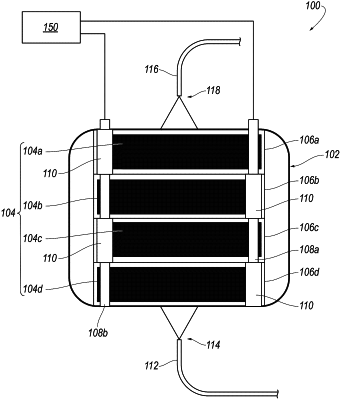| CPC C02F 1/46114 (2013.01) [C02F 1/283 (2013.01); C02F 1/42 (2013.01); C02F 1/52 (2013.01); C02F 9/00 (2013.01); C02F 2001/427 (2013.01); C02F 2101/101 (2013.01); C02F 2101/105 (2013.01); C02F 2101/108 (2013.01); C02F 2101/14 (2013.01); C02F 2101/306 (2013.01)] | 48 Claims |

|
1. A method of removing a contaminant from an aqueous mixture comprising:
a) flowing a contaminated aqueous mixture comprising one or more ionic contaminants through a vessel that houses a capture bed stack comprising a plurality of capture beds, a first electrode inserted through each one of the capture beds, and a second electrode inserted through each one of the capture beds; wherein the plurality of capture beds are separated from each other by one or more separators, and wherein each one of the plurality of capture beds is in electrical contact with either the first electrode or the second electrode, and wherein the first electrode is in electrical contact with a first plurality of capture beds but is electrically insulated from a second plurality of capture beds, and wherein the second electrode is in electrical contact with the second plurality of capture beds but is electrically insulated from the first plurality of capture beds;
b) applying a voltage to the first electrode and to the second electrode, such that the one or more ionic contaminants is bound to the plurality of capture beds;
c) flowing an aqueous wash liquid through the vessel; and
d) modulating the voltage applied to the first electrode and to the second electrode, such that the one or more ionic contaminants bound to the plurality of capture beds is released from the plurality of capture beds and is washed from the plurality of capture beds via the aqueous wash liquid.
|